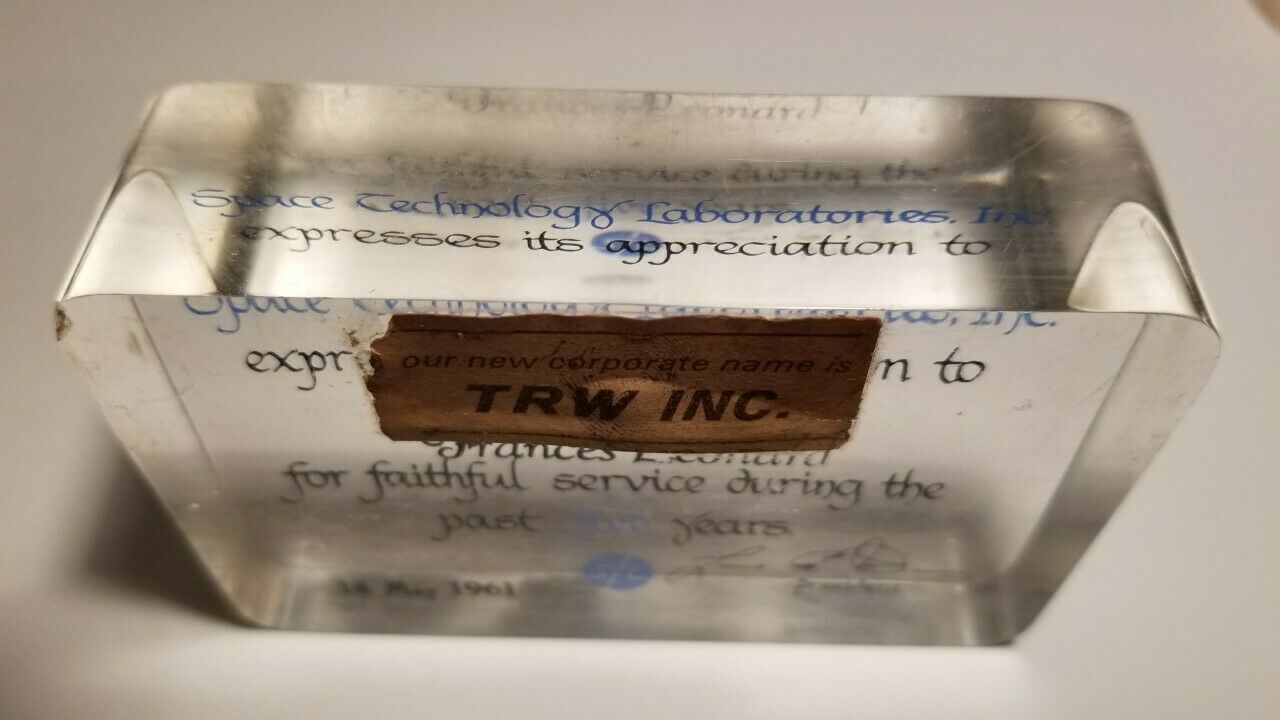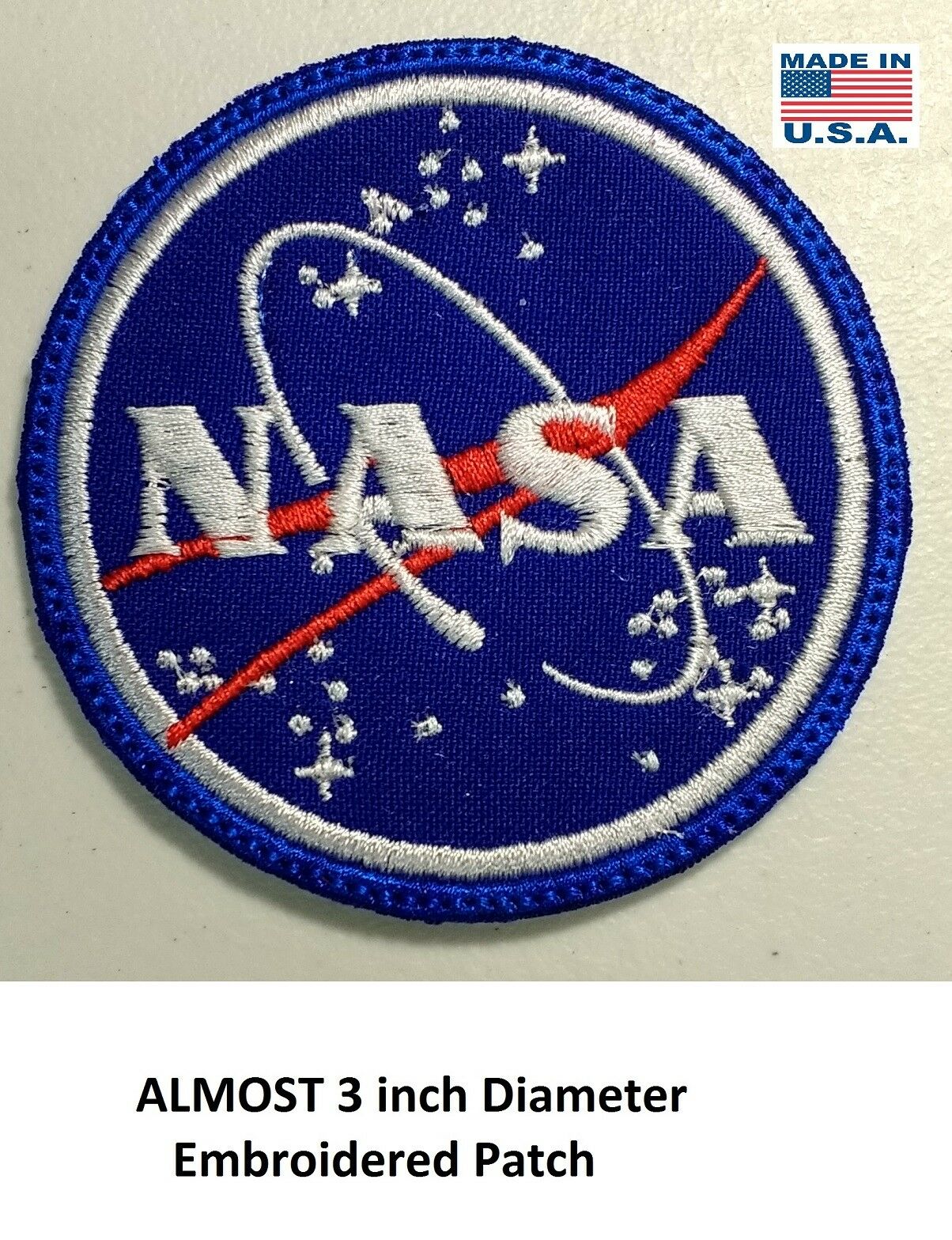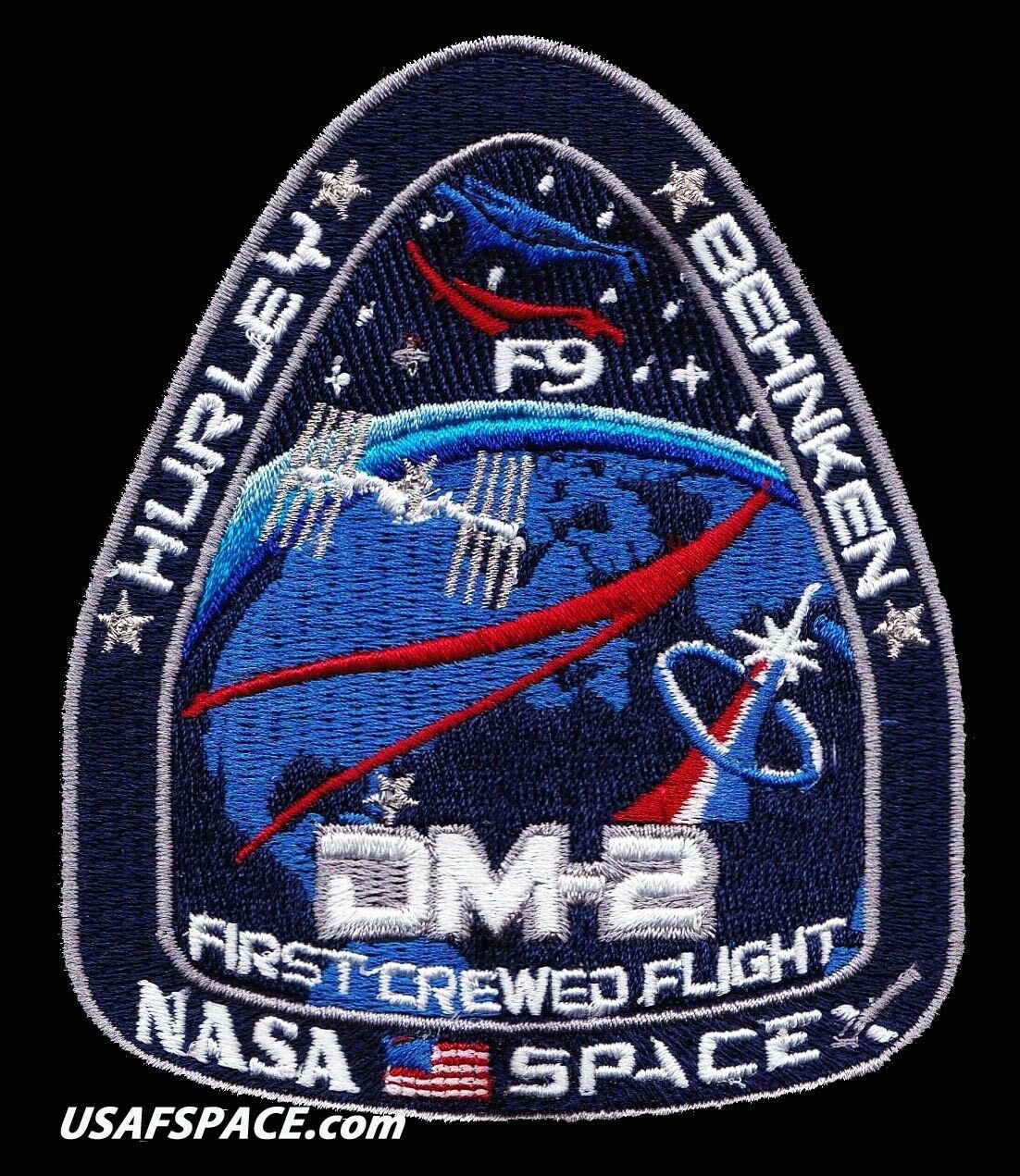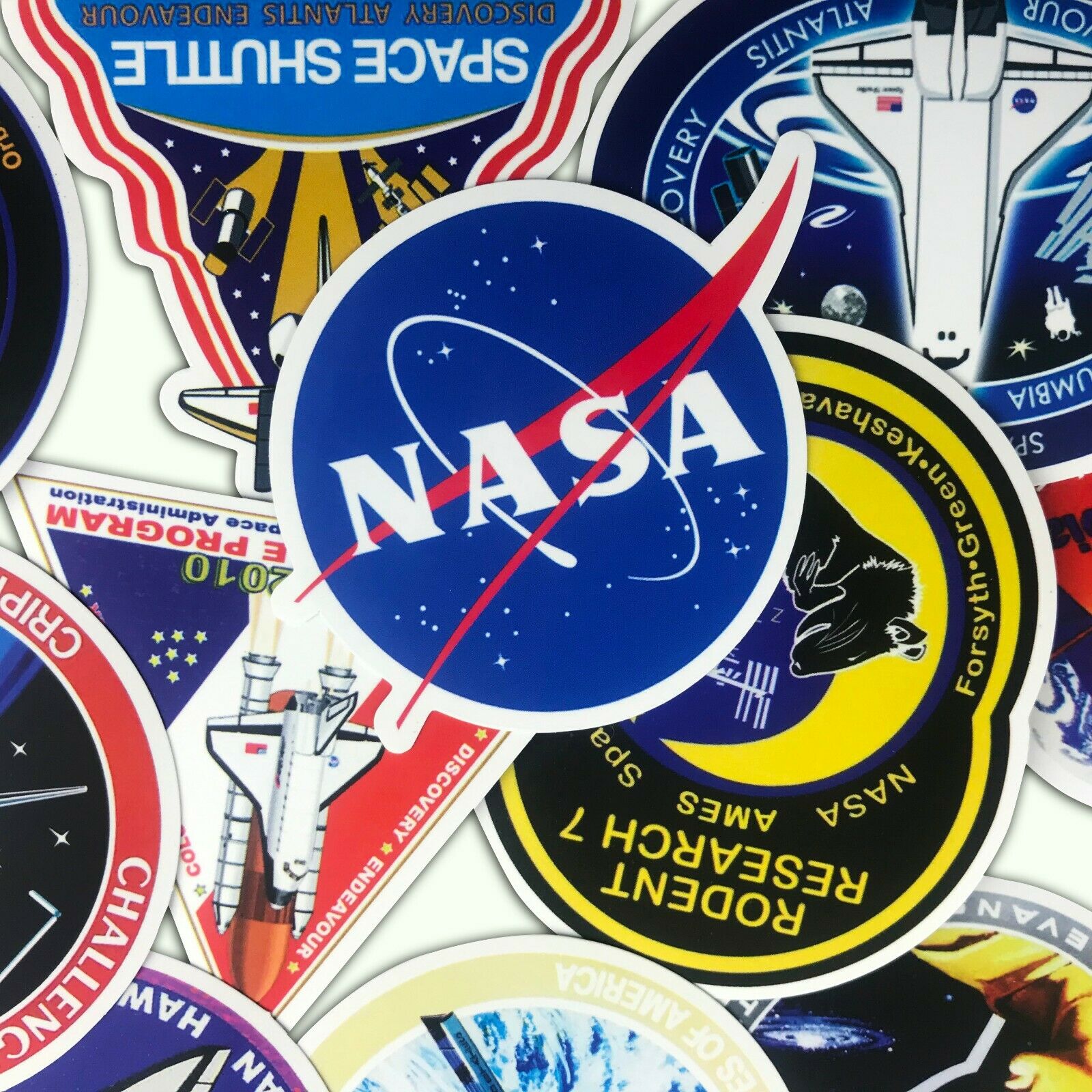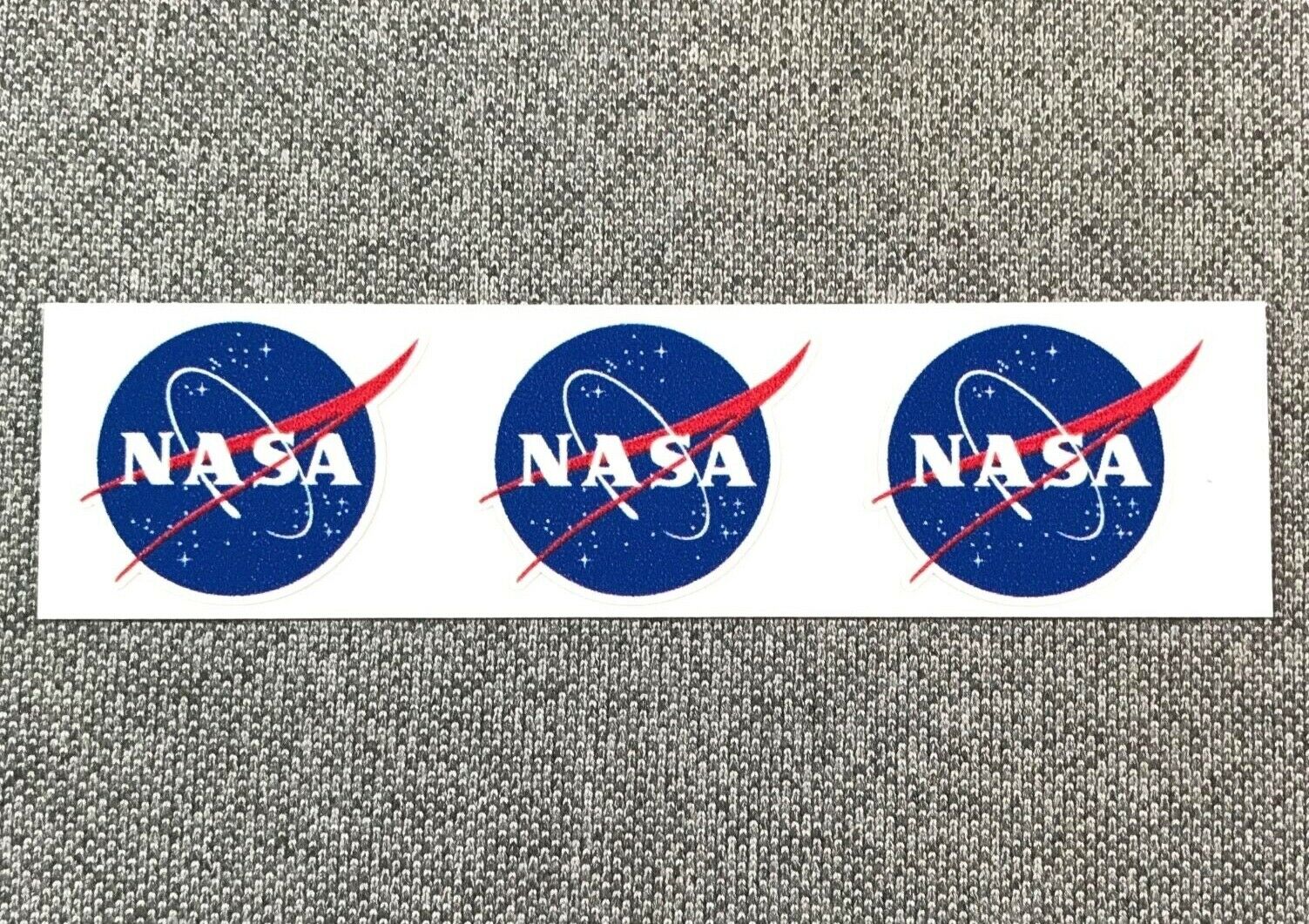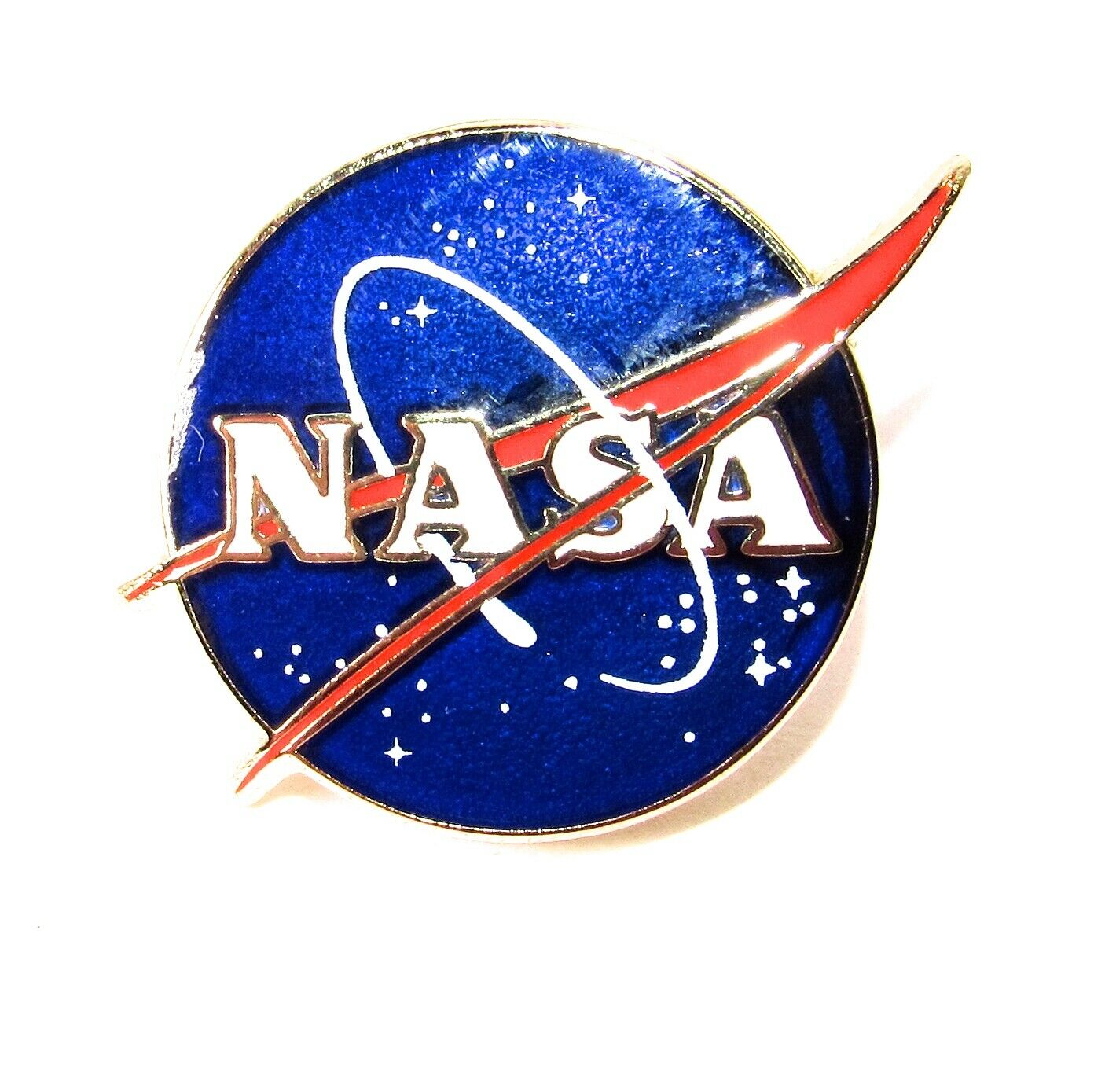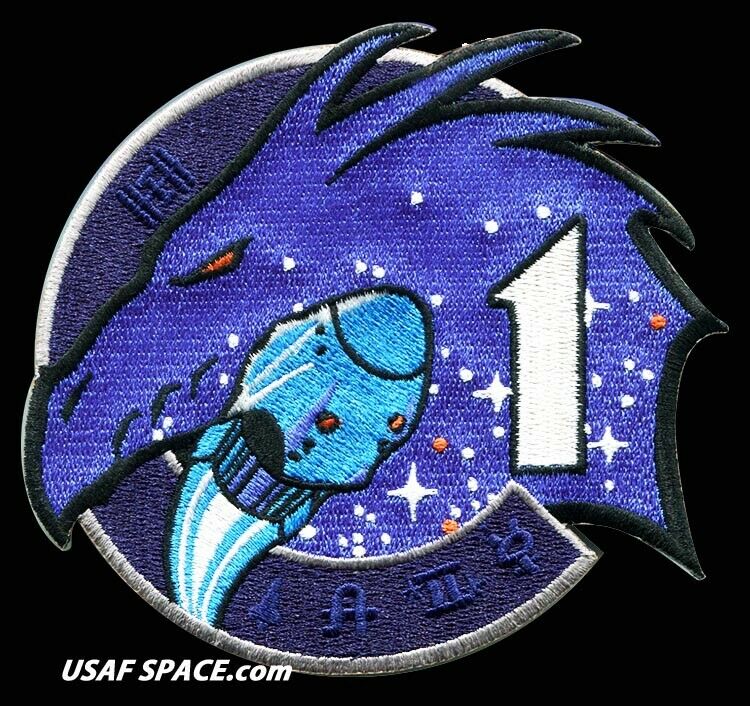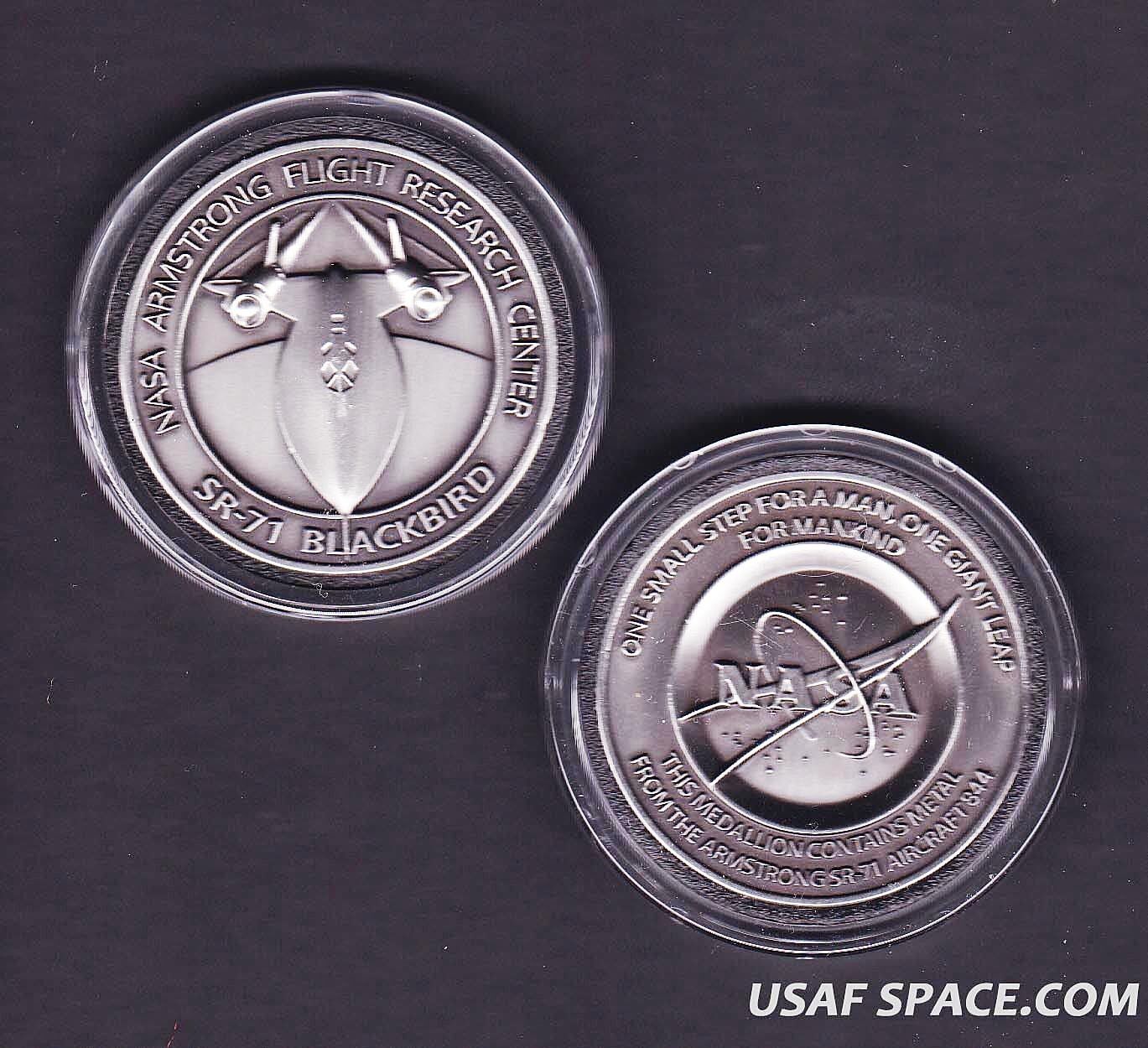-40%
XRARE VINTAGE 1961 SPACE TECHNOLOGIES LABORATORIES TRW LUCITE EMBEDDED AWARD EX
$ 14.78
- Description
- Size Guide
Description
RARE VINTAGE Dated 1961 SPACE TECHNOLOGIES LABORATORIES TRW LUCITE EMBEDDED AWARD EXCELLENT CONDITION / HARD TO FIND ORIGINAL 1961 ~STL~ PERSONALIZED NAME LUCITE 5 YEAR SERVICE AWARD SIGNED BY THEN PERSIDENT OF ~STL~ / THICK CLEAR LUCITE BLOCK MEASURES 4 INCHES LONG BY 2.50 INCHES HIGH BY 1 INCH WIDE / EMBEDDED LABELS WITH WORDS (See Photographs) / AFTERTHOUGHT PAPER LABEL ATTACHED TO TOP FRONT READS: … OUR NEW CORPORATE NAME IS TRW, INC. … (May also be removed by soaking if desired) / PLEASE NOTE: ONE BUMPED CORNER (size of pen tip) ON FRONT UPPER LEFT CORNER DOES NOT DETER FROM THE USE OR LOOK OTHERWISE EXCELLENT CONDITION / PLEASE SEE 12 PHOTOGRAPHS ABOVE / SHIPPING IN THE US SENT USPS PRIORITY SHIPPING WITH TRACKING / INTERNATIONAL SHIPPING IS A FLAT RATE.SPACE TECHNOLOGIES LABORATORIES...NOW TRW INC.______
Space Technology Laboratories (STL), then a division of Ramo-Wooldridge Corp., designed and produced the identical payloads for
Pioneer 0, 1 and 2
. These were intended to orbit and photograph the Moon, but launch vehicle problems prevented this. NASA launched Pioneer 1 as its first spacecraft on October 11, 1958. It set a distance record from Earth, and provided data on the extent of Earth's radiation belts. Pioneer 10 and 11 were nearly identical spacecraft, designed and fabricated by TRW Systems Group. They were optimized for ruggedness since they were the first man-made objects to pass through the asteroid belt and Jupiter's radiation belt. Simplicity, redundancy, and use of proven components were essential. As NASA's first all-atomic powered spacecraft, these used plutonium-238 units developed by Teledyne Isotopes. Pioneer 10 carried eleven instruments and Pioneer 11 carried twelve for investigating Jupiter and Saturn, respectively. Data was transmitted back to Earth at 8 Watts, 128 bytes/s at Jupiter and 1 byte/s from further out. Pioneer 10 was the first man-made object to pass the planetary orbits and its last telemetry was received in 2002, thirty years after launch. TRW Systems Group designed and built the instrument package which performed the Martian biological experiments, searching for life aboard the two Viking Landers launched in 1975. The 34-lb (15.5 kg) system performed four experiments on Martian soil using a gas chromatograph-mass spectrometer (GC-MS) and a combined biological instrument.





